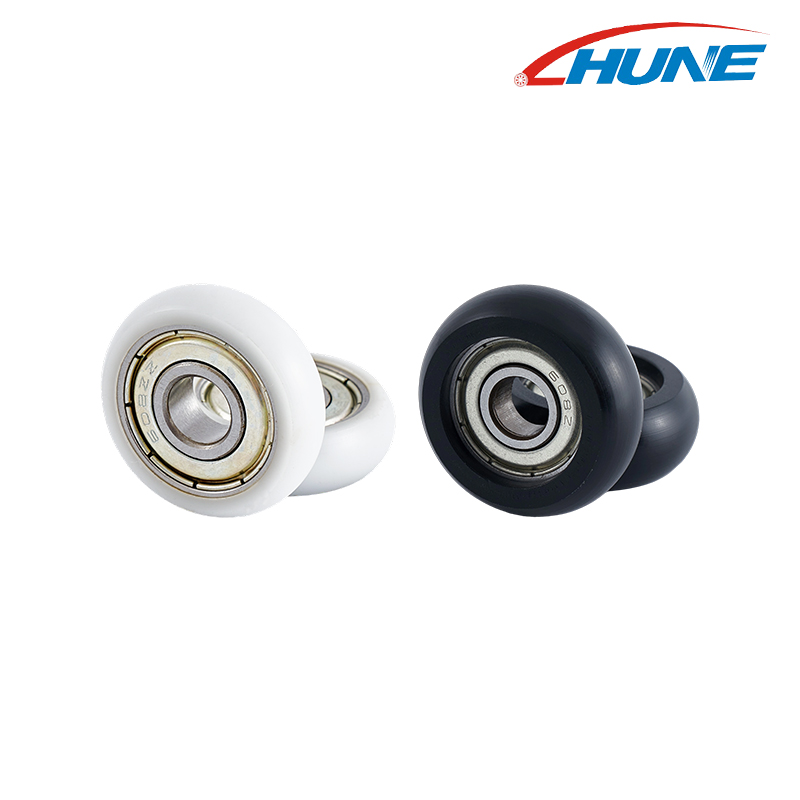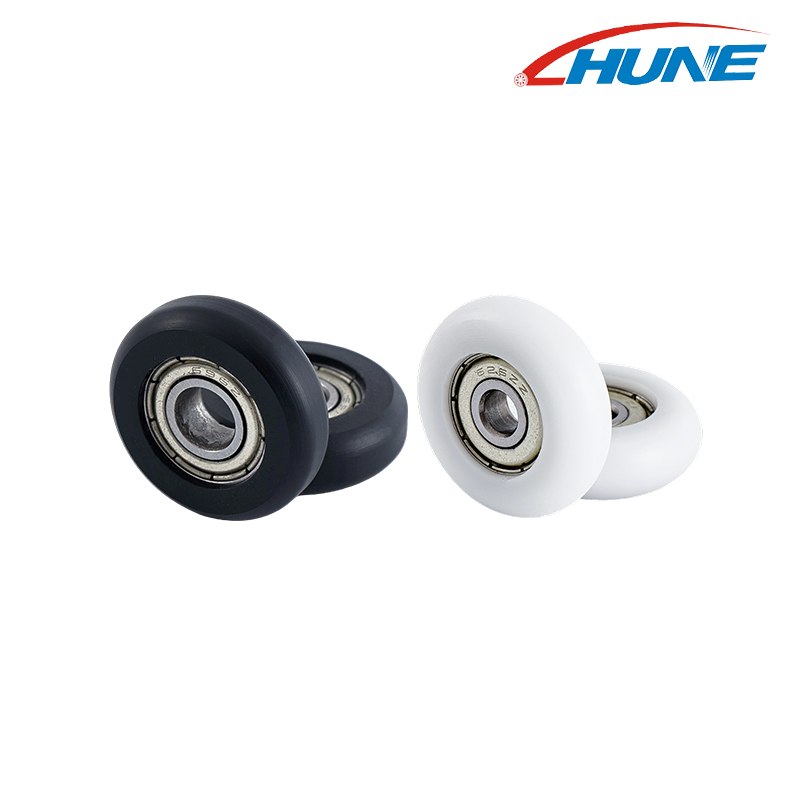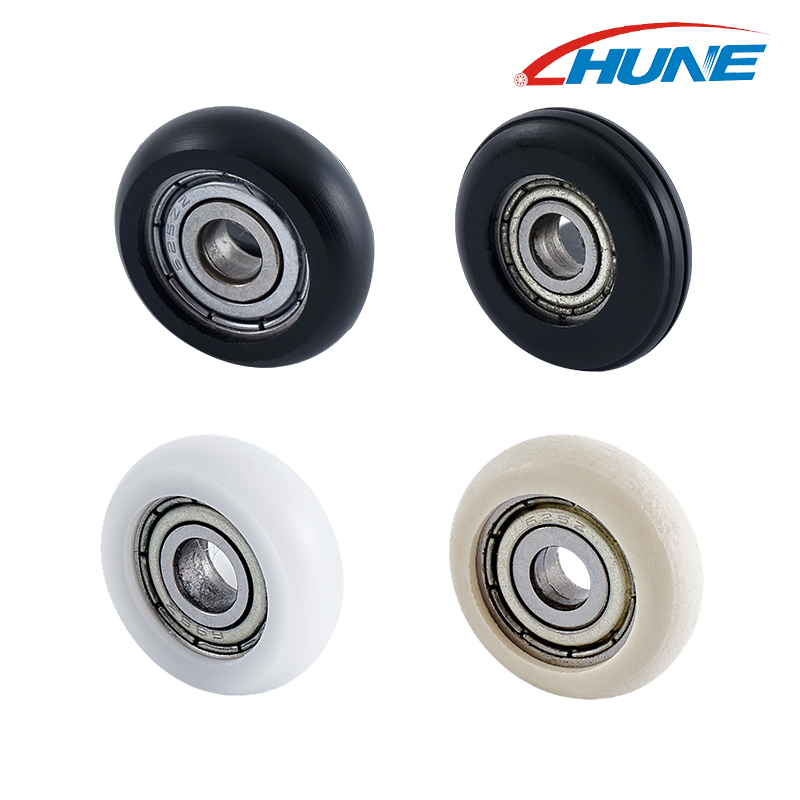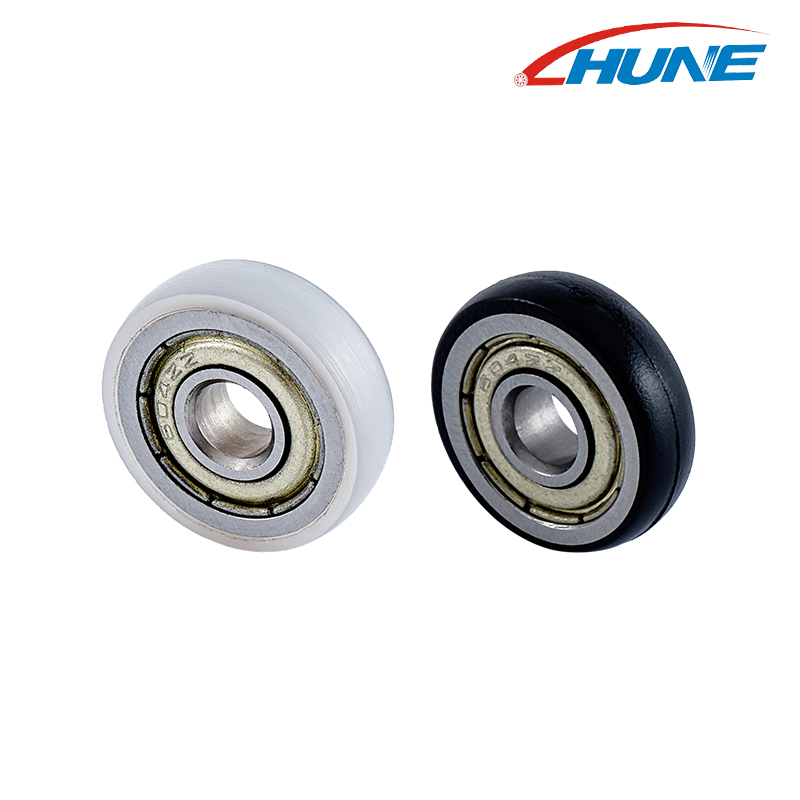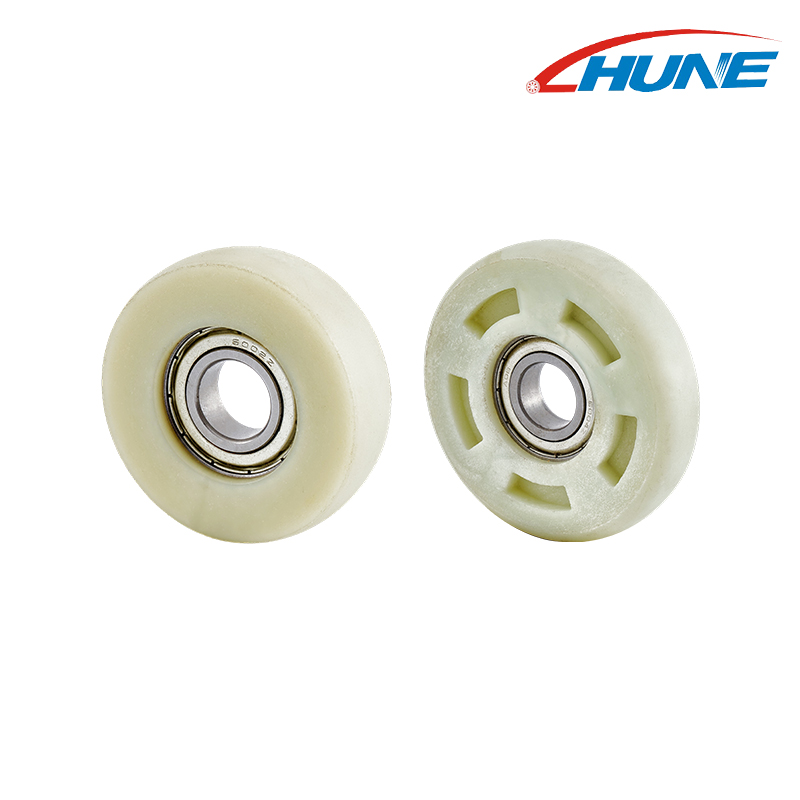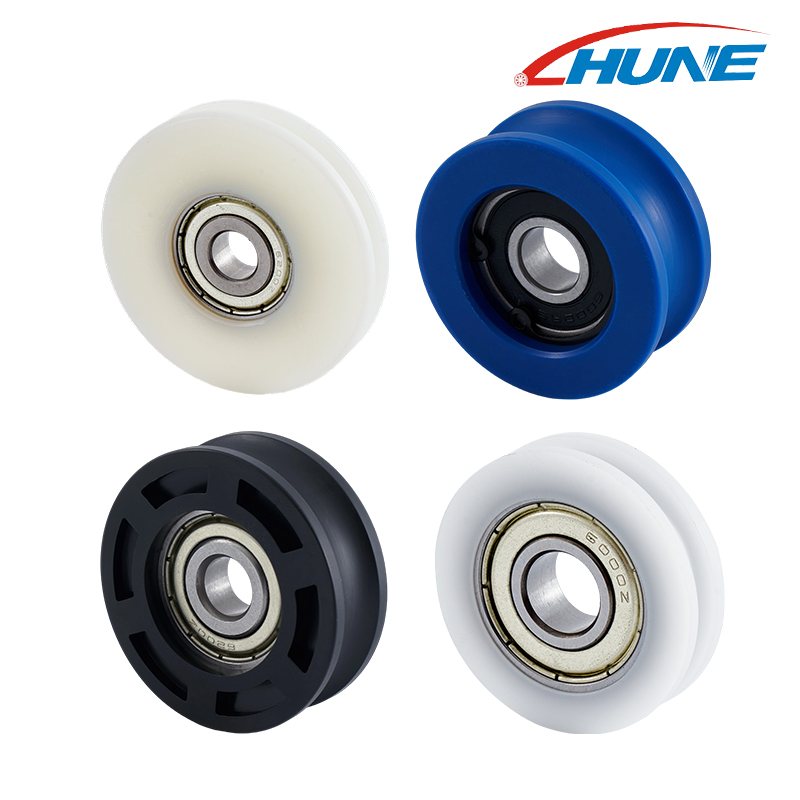Window roller jamming is a common issue that can significantly impact the performance and longevity of sliding windows. When rollers become stuck due to dirt, debris, wear, or lack of lubrication, the window may not open or close smoothly, causing inconvenience in daily use.
1. Impact on Daily Use
Stuck or jammed rollers make windows difficult to operate. Users may experience jerky or uneven sliding, increased noise, or complete inability to move the window. This reduces comfort and can pose safety risks in emergency situations where windows must be opened quickly.
2. Effect on Window Lifespan
Persistent roller jamming increases friction and places extra stress on the roller, track, and window frame. Over time, this accelerates wear and tear, potentially damaging the track or frame and shortening the overall lifespan of the window system.
3. Potential Repair Costs
Neglecting jammed rollers often leads to costly repairs or even complete replacement of the sliding window. Regular maintenance, cleaning, and timely roller replacement can prevent expensive repairs, saving both time and money.
Sliding Rollers in Windows
Sliding rollers are small, yet essential components installed at the bottom or top of a sliding window sash. They allow the window to glide smoothly along the track while supporting its weight.
A sliding roller consists of a wheel, bearing, housing, axle, and track interface. The wheel rolls along the track, while the bearing reduces friction and ensures smooth rotation. The housing provides structural support, and the axle connects the wheel to the housing. The track interface ensures proper alignment and smooth movement along the window frame.
- Smooth Operation: Rollers enable effortless opening and closing of sliding windows.
- Noise Reduction: High-quality rollers minimize squeaking and grinding noises.
- Load Support: Rollers bear the weight of the window sash, preventing stress on the frame and track.
- Durability: Properly functioning rollers reduce wear on both the window and track, extending overall lifespan.
Common Causes of Window Roller Jamming
Understanding the common causes helps homeowners and building managers prevent issues and maintain long-lasting, reliable performance.
1. Accumulation of Dirt and Debris
Dust, dirt, sand, or other debris often collects in window tracks over time. This buildup obstructs roller movement, creating friction that can cause the rollers to stick or jam. Regular cleaning is essential to keep tracks and rollers free from debris.
2. Lack of Lubrication
Insufficient or improper lubrication of the roller bearings or wheel surfaces increases friction, leading to difficulty in sliding and eventual roller jamming. Using the right lubricant, such as silicone or Teflon-based products, helps maintain smooth and quiet operation.
3. Worn or Damaged Rollers
Rollers made from low-quality materials or exposed to heavy use may wear out, crack, or deform. Worn rollers fail to roll smoothly along the track, often resulting in sticking or jamming. Periodic inspection and replacement of damaged rollers prevent further problems.
4. Misaligned or Damaged Tracks
Bent, warped, or uneven tracks prevent rollers from moving freely. Even high-quality rollers can jam if the track is misaligned. Ensuring proper track installation and regular inspection can reduce the risk of roller obstruction.
5. Bearing Failure
Rollers with worn or corroded bearings cannot rotate freely, causing increased friction and eventual jamming. Bearings should be inspected regularly, and high-quality, sealed bearings can reduce exposure to dust and moisture.
6. Environmental Factors
Extreme temperatures, humidity, or exposure to outdoor elements can affect roller performance. Metal rollers may corrode, and plastic or rubber components may shrink or deform, leading to roller sticking. Selecting appropriate roller materials for the environment is crucial.
How Roller Jamming Impacts Window Performance?
Understanding these impacts helps homeowners and facility managers take preventive measures to maintain optimal functionality.
1. Reduced Smoothness and Ease of Use
Jammed rollers create friction, making windows difficult to open or close. Users may experience jerky or uneven movement, requiring extra effort to operate the window. Over time, this can lead to frustration and decreased convenience in daily use.
2. Increased Noise Levels
A common consequence of roller jamming is increased noise. Sticking or grinding rollers can produce squeaks or rattling sounds when sliding the window. High-quality, properly maintained rollers normally operate quietly, so noise is often an early indicator of potential jamming.
3. Accelerated Wear and Tear
When rollers do not move smoothly, the extra friction places stress on the roller components, bearings, track, and window frame. Continuous strain can cause permanent damage, reducing the lifespan of both the rollers and the window system.
4. Higher Maintenance and Repair Costs
Neglecting jammed rollers can lead to more serious damage, such as bent tracks, worn bearings, or broken roller wheels. Repairing or replacing these components can be costly, especially if multiple windows in a building are affected. Regular inspection and timely intervention help minimize repair expenses.
5. Safety Concerns
A jammed window may not open or close properly in emergencies, posing safety risks. Smooth-operating rollers ensure that windows can be used quickly and safely when needed.
Preventive Cleaning and Maintenance Techniques for Window Sliding Rollers
Proper preventive cleaning and maintenance of window sliding rollers are essential to ensure smooth, quiet, and long-lasting operation. Regular attention reduces friction, prevents jamming, and extends the lifespan of your sliding windows, whether in residential or commercial settings.
1. Tools and Materials Needed
To effectively clean and maintain window rollers, gather the following tools and materials:
- Microfiber Cloths: Gentle on surfaces, ideal for removing dust and grime.
- Soft Brushes: Perfect for loosening dirt from rollers and track corners without causing scratches.
- Vacuum Cleaner: Equipped with a nozzle attachment to remove debris from hard-to-reach track areas.
- Mild Detergents: Safe for cleaning rollers and tracks without damaging materials.
2. Step-by-Step Guide for Cleaning Rollers and Tracks
- Step 1: Remove the Window Sash – Carefully lift or slide the sash out of the frame to access the rollers.
- Step 2: Clean Rollers – Use microfiber cloths and soft brushes to remove dust, dirt, and grime from roller wheels, bearings, and housing.
- Step 3: Clean Tracks – Vacuum the track to remove loose debris, then wipe with a mild detergent solution to eliminate stubborn residue.
- Step 4: Inspect Rollers – Check for wear, misalignment, or damage. Replace any rollers that are cracked, worn, or not rolling smoothly.
- Step 5: Lubricate Bearings – Apply silicone or Teflon-based lubricant sparingly to roller bearings and wheel surfaces to reduce friction and noise.
- Step 6: Reinstall the Window Sash – Secure the rollers in place, slide the sash back into the frame, and test for smooth, quiet operation.
3. Removing Debris Without Damaging Rollers or Tracks
- Avoid metal tools that can scratch or damage roller surfaces.
- Use soft brushes and cloths for gentle cleaning.
- Apply mild cleaning solutions rather than harsh chemicals to protect materials.
- Vacuum first to remove loose particles before wiping or brushing.
4. Regular Maintenance Schedules
- Residential Windows: Inspect and clean every 3–6 months, depending on usage and environmental conditions.
- Commercial Windows: More frequent maintenance, ideally every 2–3 months, due to higher traffic and exposure to dust and debris.
- Regular checks ensure rollers are aligned, lubricated, and free from obstruction, preventing jams and prolonging window lifespan.
Lubrication Methods to Avoid Jamming in Window Sliding Rollers
Proper lubrication is one of the most effective ways to prevent window roller jamming, reduce noise, and extend the lifespan of sliding windows. Using the right lubricant and applying it correctly ensures smooth, quiet, and efficient operation.
1. Choosing the Right Lubricant for Different Roller Materials
- Nylon Rollers: Use silicone-based lubricants for low friction and quiet movement. Avoid oil-based lubricants that attract dust.
- Metal Rollers: Teflon or silicone-based lubricants provide long-lasting protection against friction and corrosion.
- Rubber-Coated Rollers: Mild, silicone-based lubricants prevent drying or cracking of rubber surfaces.
2. Proper Application Techniques
- Clean First: Ensure rollers and tracks are free of dust, dirt, and debris before applying lubricant.
- Apply Sparingly: A thin layer of lubricant on the roller bearings and wheel surfaces is sufficient; over-application can attract dust and cause buildup.
- Distribute Evenly: Move the window back and forth several times to allow the lubricant to spread evenly across all contact surfaces.
- Avoid Track Overload: Focus on roller bearings and wheel surfaces rather than the full track length to prevent excess lubricant accumulation.
3. Frequency of Lubrication
- Residential Windows: Lubricate every 3–6 months, depending on usage and environmental conditions.
- Commercial Windows: High-traffic areas require lubrication every 2–3 months to maintain smooth and quiet operation.
- Regular lubrication prevents roller sticking, reduces friction, and maintains long-lasting performance.
4. Special Tips for Noise Reduction and Long-Lasting Roller Life
- Use precision-engineered rollers and high-quality lubricants to minimize operational noise.
- Ensure proper alignment of rollers in the track to reduce uneven wear and friction.
- Avoid mixing different lubricant types, as incompatible chemicals can degrade roller materials.
- Inspect rollers periodically for wear or misalignment and reapply lubricant as needed.
Repairing or Replacing Damaged Window Sliding Rollers
Window sliding rollers are essential for smooth, quiet, and efficient operation. Over time, rollers can wear out, crack, or become damaged due to friction, dirt accumulation, or heavy usage.
1. When to Repair vs. Replace a Roller
- Repair: Minor issues such as dirt buildup, temporary sticking, or minor misalignment can often be fixed through cleaning, lubrication, and adjustment. Repairing rollers is cost-effective and extends their life if the structural integrity is intact.
- Replace: Rollers should be replaced if they are cracked, heavily worn, have broken bearings, or cannot roll smoothly even after cleaning and lubrication. Replacement is necessary to prevent further damage to the track or window frame.
2. Step-by-Step Guide for Replacing Worn or Broken Rollers
- Step 1: Remove the Window Sash – Carefully lift or slide the sash out of the frame to access the rollers.
- Step 2: Detach the Old Rollers – Use a screwdriver or Allen wrench to remove screws or hardware securing the roller in its housing. Take care not to damage the track or window frame.
- Step 3: Clean the Track – Remove any dirt, debris, or residue from the track to ensure smooth operation of the new rollers.
- Step 4: Install New Rollers – Insert the replacement roller into the housing, aligning it properly with the track. Secure it with screws or mounting hardware as needed.
- Step 5: Test Window Movement – Slide the window sash back into the frame and test for smooth, quiet operation. Make minor adjustments if necessary.
3. Choosing the Right Type, Size, and Material for Replacement
- Type: Select rollers compatible with your sliding window system, such as top-hung, bottom-hung, or tandem rollers.
- Size: Ensure the diameter of the wheel, width, and height of the roller match the original specifications for proper alignment and performance.
- Material: Choose materials based on usage and environmental conditions. Nylon or polyurethane rollers are ideal for quiet, low-maintenance operation, while metal rollers are more suitable for heavy-duty or commercial applications.
- Bearing Type: Consider sealed or precision ball bearings to reduce friction and extend roller lifespan.
How Can You Choose Quality Rollers to Minimize Jamming?
Selecting high-quality rollers is one of the most effective ways to prevent jamming, reduce maintenance, and ensure long-lasting smooth operation of sliding windows and doors. The right choice of material, bearing type, and manufacturer significantly impacts performance and durability.
1. Material Selection
- POM (Polyoxymethylene): Known for its high strength, low friction, and excellent wear resistance. Ideal for quiet, smooth sliding in residential and commercial windows.
- Nylon: Lightweight and cost-effective, nylon rollers offer low friction and moderate durability. Suitable for standard residential applications.
- Stainless Steel: Provides maximum durability and corrosion resistance. Perfect for heavy-duty or outdoor applications where exposure to moisture or harsh environments is high.
- Reinforced Polymers: Advanced materials that combine strength and flexibility, ensuring long-lasting performance while reducing noise and wear.
2. Bearing Types
- Micro Bearings: Compact and precise, offering smooth rotation and minimal friction for lightweight windows.
- Sealed Bearings: Protect against dust and debris, maintaining consistent performance and reducing maintenance frequency.
- Heavy-Duty Bearings: Designed for large or commercial windows, capable of supporting higher loads and ensuring long-lasting reliability.
3. Cost-Benefit Analysis
Investing in high-quality rollers may have a higher upfront cost, but it offers long-term savings:
- Reduced maintenance frequency and costs.
- Lower risk of roller jamming or damage.
- Extended window lifespan and consistent smooth operation.
- Increased comfort and noise reduction in daily use.
4. Hune Rollers: Why Choose Hune Window & Door Roller
Hune is a professional manufacturer specializing in high-quality window and door rollers. With advanced engineering, precision bearings, and durable materials, Hune rollers ensure:
- Smooth, quiet operation with minimal friction.
- Long-lasting performance for residential and commercial applications.
- Reduced maintenance needs and prevention of common jamming issues.
- Tailored solutions to fit specific window and door systems.
FAQ: Common Questions About Window Roller Jamming and Maintenance
How often should I clean and lubricate window rollers?
- Residential windows: Every 3–6 months, depending on usage and environment.
- Commercial or high-traffic windows: Every 2–3 months to maintain smooth, quiet operation.
What signs indicate my window rollers are failing?
- Common signs include difficulty sliding the window, squeaking or grinding noises, uneven movement, visible wear or cracks on the roller, and wobbly or misaligned rollers.
Can I repair a jammed roller, or should I replace it?
- Minor sticking caused by dirt or misalignment can often be repaired with cleaning and lubrication. However, rollers that are cracked, worn, or have broken bearings should be replaced to prevent further damage.
What type of lubricant is best for window rollers?
- Silicone or Teflon-based lubricants are recommended. Avoid oil-based lubricants, as they attract dust and debris, which can worsen jamming.
Why is choosing a professional roller manufacturer important?
- High-quality rollers from a reliable manufacturer, such as Hune, ensure smooth operation, reduce maintenance, prevent jamming, and provide long-lasting performance for both residential and commercial windows.
Are there rollers designed specifically to resist jamming?
- Yes. High-quality rollers made from POM, reinforced polymers, or stainless steel, combined with sealed bearings, are engineered to minimize friction, resist dust and debris, and reduce the risk of jamming.
Can improper installation cause roller jamming?
- Yes. Misaligned tracks or improperly mounted rollers can increase friction and lead to sticking or uneven movement. Correct installation is essential for smooth, quiet operation.
Can environmental factors affect roller performance?
- Yes. Excessive dust, dirt, moisture, humidity, and extreme temperatures can cause rollers to stick, corrode, or deform, increasing the likelihood of jamming.
Are all rollers the same for residential and commercial windows?
- No. Residential windows often use lightweight nylon or POM rollers for quiet operation, while commercial or heavy-duty windows require reinforced polymers, stainless steel, or heavy-duty bearing rollers to support higher loads.
How do sealed bearings improve roller performance?
- Sealed bearings prevent dust and debris from entering, reduce friction, maintain smooth rotation, and extend the overall lifespan of the roller.
What is the best way to clean window tracks?
- Use a soft brush or vacuum to remove loose dirt and debris, then wipe with a mild detergent solution. Avoid harsh chemicals or metal tools that can damage the track or rollers.






 English
English  Español
Español  日本語
日本語 